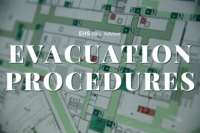No one wants it to happen, but an emergency, natural or manmade, can strike at anytime, 24/7. What’s more, it need not be a major, nationally-televised incident, such as a hurricane, earthquake, or act of political terror. An event as common as a local building fire can present just as large a challenge to you. These resources will help you create a plan for handling such crises, whatever their scope, and to carry it out in a way that best protects your employees and your company.
Free Special Report: 50 Tips for More Effective Safety Training
On March 25, the National Safety Council (NSC) announced it’s ramping up its efforts to combat overdoses in the workplace, launching several new initiatives. These initiatives include free opioid overdose eLearning resources, an online workplace well-being hub, and the availability of bulk online purchasing of Narcan® (naloxone) nasal spray for employers nationwide. According to the […]
When it comes to workplace fire preparedness, OSHA vigorously enforces its exit routes and emergency planning standards (29 Code of Federal Regulations 1910 Subpart E). Subpart E also includes requirements for emergency action and fire prevention plans. Here’s what you need to know about emergency action plans.
Back to Basics is a weekly feature that highlights important but possibly overlooked information that any EHS professional should know. This week, we examine workplace fire preparedness. Have you considered what might happen if a fire broke out in your facility? On March 25, 1911, 146 garment workers were killed in the Triangle Shirtwaist Factory […]
A Wisconsin federal judge has sentenced six Didion Milling Inc. officials for their role in a fatal explosion at a facility operated by the corn milling company in 2017. “These defendants put Didion workers in grave danger, and five people tragically lost their lives, devastating their families and their community,” said U.S. Attorney General Merrick B. […]
On episode 194 of EHS On Tap, Tom Heneghan, manager of Preparedness Education and Youth Preparedness at American Red Cross, talks about the importance of business continuity planning.
On February 5, the Occupational Safety and Health Administration (OSHA) issued a notice of proposed rulemaking (NPRM) for a new emergency response standard to replace the agency’s nearly 44-year-old fire brigades standard (89 Fed. Reg. 7774), which was established in 1980. Emergency response has been covered by a patchwork of hazard-specific OSHA standards, none of […]
John Howard, the National Institute for Occupational Safety and Health’s (NIOSH) director, called attention to the institute’s efforts to bring strategic foresight to the occupational safety and health (OSH) field in NIOSH’s eNews, released January 3. NIOSH’s Office of Research Integration is trying to help safety and health practitioners look ahead and ask what may […]
On December 21, the Occupational Safety and Health Administration (OSHA) released text of a proposed rule it plans to publish in January 2024 covering the health and safety of emergency response workers. The proposal would update the agency’s 43-year-old fire brigades rule. It would also update the existing fire brigades standard and expand safety and […]
This week, EHSDA highlighted the basics of evacuation procedures in an emergency. With that in mind, the Song of the Week is a song that was popularized by the Animals in 1965, “We Gotta Get Out of This Place.” Written by songwriters Barry Mann and Cynthia Weill, the song was originally intended to be recorded […]
During emergencies, things can go wrong in an instant. It’s crucial for safety leaders to develop emergency action plans (EAP) with effective evacuation procedures, so that in a disaster scenario, employees know where to go. Here’s what you need to know about evacuation procedures. Check out our Back to Basics: Evacuation Procedures article for more information.










